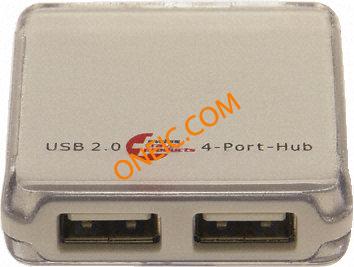USB 2
USB hubs and extension modules for connectivity and electronic control
Manufacturer: ['system-level-solutions', 'thomas-betts', 'friwo', 'amphenol', 'arduino', 'phoenix-contact']
series introduction
# Unveiling the USB 2.0 Product Series: A Timeless Standard in Connectivity
## Introduction
In the ever - evolving landscape of digital technology, the USB 2.0 product series stands as a cornerstone of connectivity. Since its inception, USB 2.0 has revolutionized the way we transfer data, charge devices, and connect peripherals to our computers and other electronic devices. This detailed introduction will explore the key features, technical specifications, applications, and advantages of the USB 2.0 product series.
## Key Features
### High - Speed Data Transfer
One of the most significant features of USB 2.0 is its high - speed data transfer capability. It offers a maximum theoretical data transfer rate of 480 Mbps (megabits per second). This speed is a substantial improvement over its predecessor, USB 1.1, which had a maximum transfer rate of only 12 Mbps. With USB 2.0, users can quickly transfer large files such as high - resolution photos, videos, and software applications between devices. For example, transferring a 1GB video file would take significantly less time with USB 2.0 compared to USB 1.1.
### Plug - and - Play Functionality
USB 2.0 devices support plug - and - play functionality, which means that users can connect or disconnect a device from a host system (such as a computer) without having to restart the system. When a USB 2.0 device is connected, the operating system automatically detects it and installs the necessary drivers if they are not already present. This seamless integration makes it incredibly convenient for users to add new peripherals to their systems, whether it's a printer, a scanner, or an external hard drive.
### Power Delivery
USB 2.0 ports can also provide power to connected devices. The standard specifies a maximum power output of 5 volts and up to 500 milliamperes (mA) of current. This power delivery feature allows for the charging of a wide range of devices, including smartphones, MP3 players, and wireless mice. It eliminates the need for separate power adapters in many cases, simplifying the user experience and reducing clutter.
### Compatibility
USB 2.0 is backward - compatible with USB 1.1 devices. This means that older USB 1.1 devices can be connected to a USB 2.0 port, although they will operate at the slower USB 1.1 speed. Additionally, most modern computers and electronic devices still support USB 2.0, ensuring widespread compatibility across a variety of platforms.
## Technical Specifications
### Cable and Connector Types
USB 2.0 uses a variety of cable and connector types to accommodate different devices and applications. The most common connector types are Type - A, Type - B, and Mini - USB and Micro - USB. The Type - A connector is the standard rectangular connector found on most computers and USB hubs. The Type - B connector is typically used for larger peripheral devices such as printers and scanners. Mini - USB and Micro - USB connectors are smaller in size and are commonly used for mobile devices, cameras, and other portable electronics.
### Signal Lines
The USB 2.0 cable consists of four signal lines: two power lines (VCC and GND) and two data lines (D+ and D - ). The power lines provide the 5 - volt power supply, while the data lines are used for transmitting and receiving data. The data lines use differential signaling, which helps to reduce electromagnetic interference and improve the reliability of data transfer.
### Protocol Layers
USB 2.0 uses a multi - layer protocol architecture. The lowest layer is the physical layer, which deals with the electrical and mechanical aspects of the connection, such as the cable, connectors, and signal levels. The next layer is the link
Images for reference

Image Preview

Image Preview